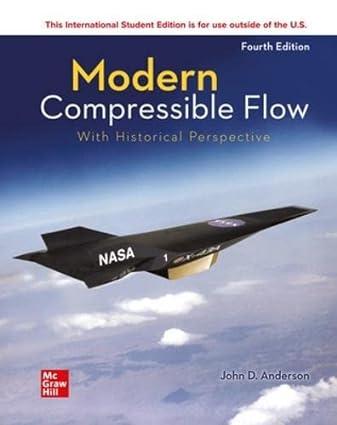Consider a (15^{circ}) half-angle right-circular cone. Using newtonian theory, calculate the drag coefficient for (1.5 leq M_{infty}
Question:
Consider a \(15^{\circ}\) half-angle right-circular cone. Using newtonian theory, calculate the drag coefficient for \(1.5 \leq M_{\infty} \leq 7\), assuming the base pressure is equal to \(p_{\infty}\). Plot these results on the same graph as you prepared for problem 10.3. From the comparison, what can you conclude about the use of newtonian theory for small- and moderate-angle cones?
Data From Problem 10.3:
The drag coefficient for a cone can be defined as \(C_{D}=D / q_{\infty} A_{b}\), where \(A_{b}\) is the area of the base of the cone. For a \(15^{\circ}\) half-angle cone, plot the variation of \(C_{D}\) with \(M_{\infty}\) over the range \(1.5 \leq M_{\infty} \leq 7.0\). Assume the base pressure \(p_{b}\) is equal to free-stream pressure.
Step by Step Answer:





